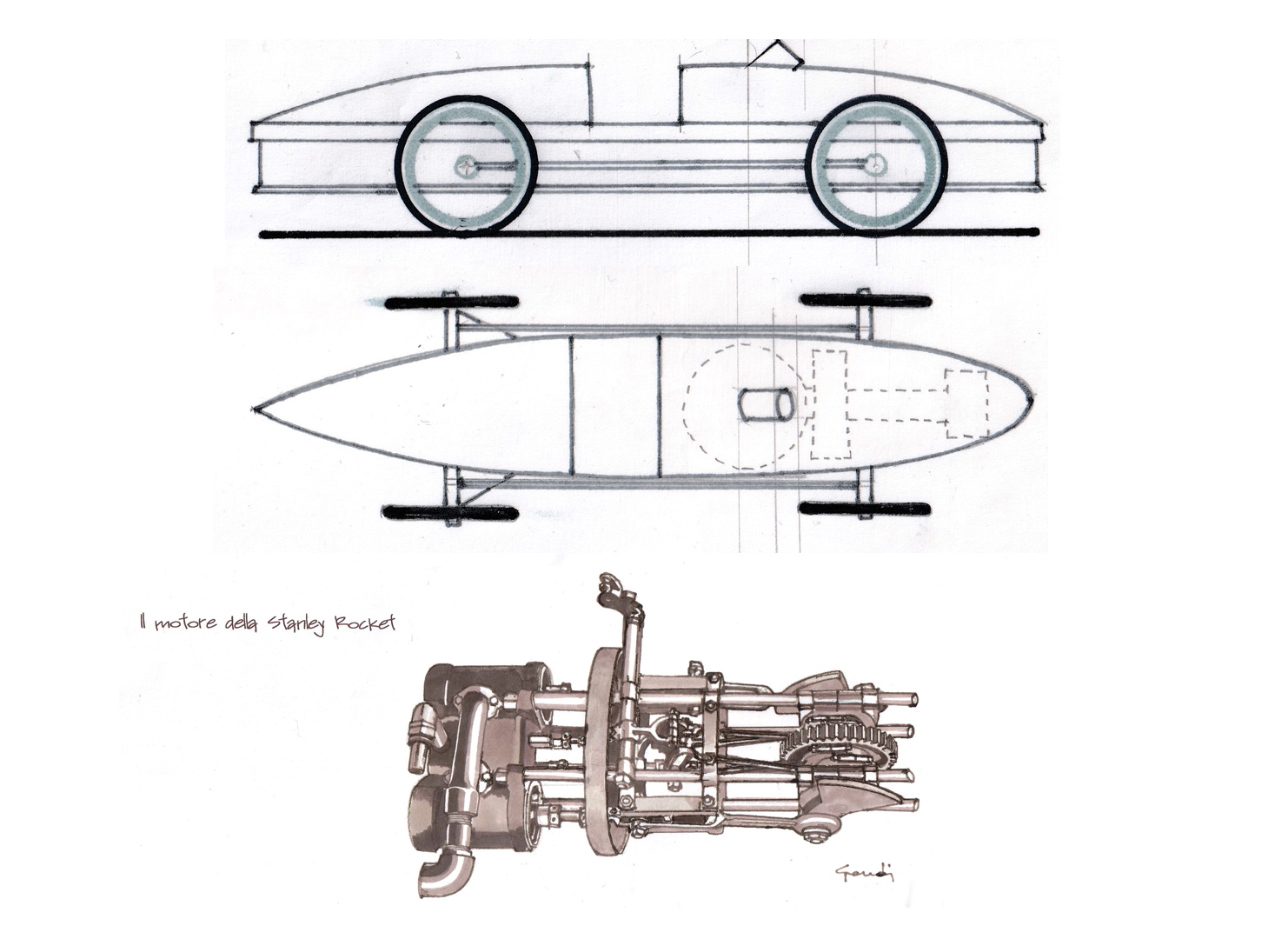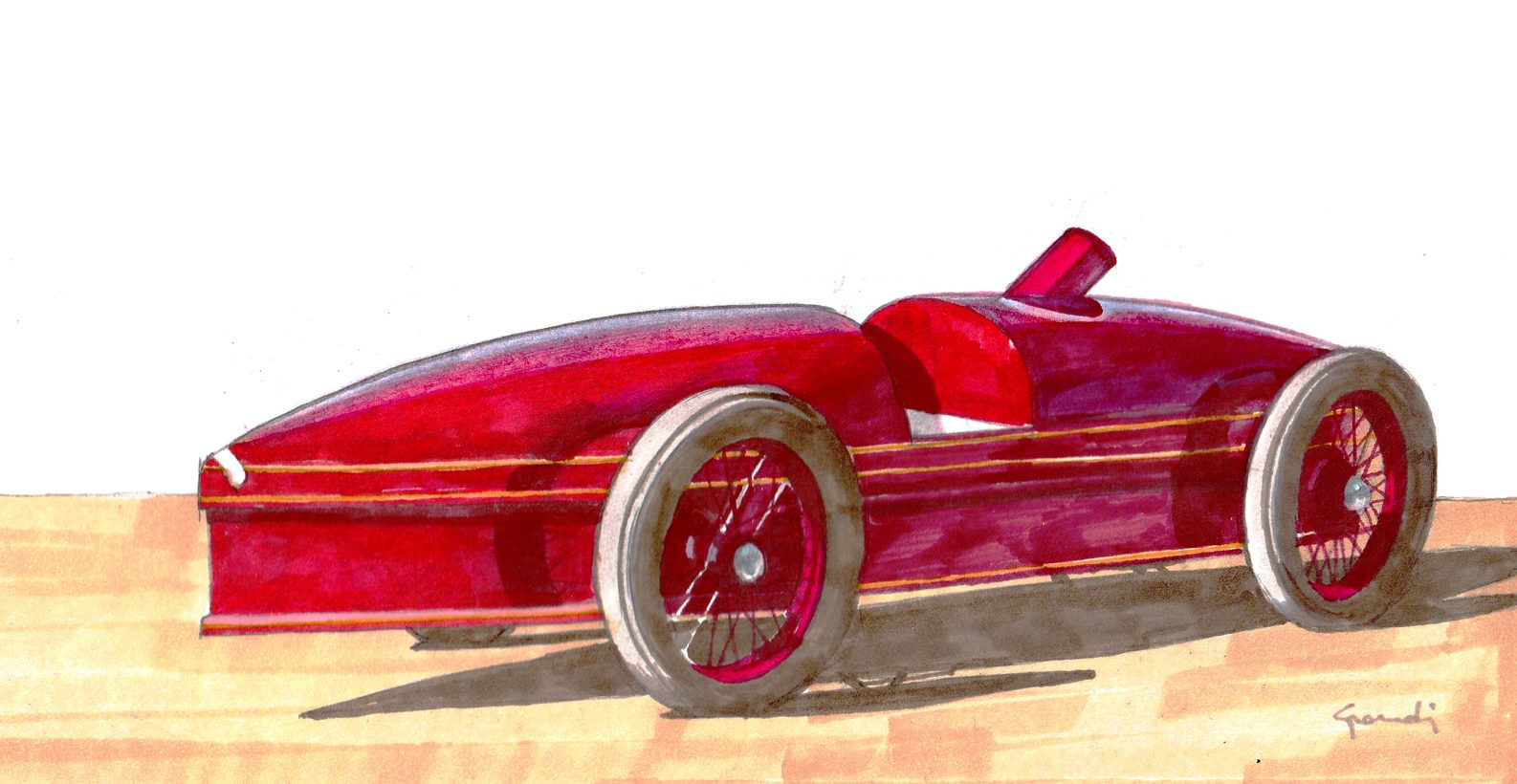The first one past 200? Steam!
With the valuable support of Prof. Massimo Grandi's depth of knowledge and illustrative talent
Photo credit: Some images are taken from the book Asi Service "Quando le disegnava il vento" by Massimo Grandi.
Aerodynamically perfect, conceived as an overturned canoe specifically to break the land speed record, on 26th January 1906 the steam-powered Stanley Streamer Rocket, driven by Fred Marriott, reached 205.44 km/h.

In this case, the Stanley brothers who built the car did not run the risk of actually driving it, instead relying on a “Hamilton” of the time to considerable success: from January 24th to 26th he broke the record several times until he becoming the first man to travel two miles in less than a minute.

The car was built specifically to break the record, and therefore had a minimal front section and very narrow tires. Even the suspension was placed inboard to avoid external elements that could affect the dynamics of the vehicle. The steam engine, a technology that was quite common at the time given the considerable experience with railways, steamers, agricultural machines and even cars, was a double-action twin-cylinder with a displacement of 3,100cc.

The steam engine works with the pressure of the high temperature steam acting on the pistons. This combination gives very high torque values , eliminating the need for a clutch and gearbox. In addition to a low centre of gravity, the Stanley had an ideal weight distribution with the central rear engine. Its weight was 753kg, outstanding for a vehicle with that engine.
